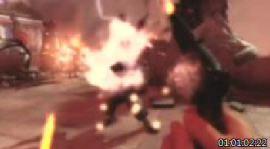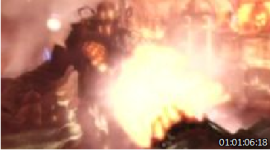Disney Studios, Epilepsy Foundation warn consumers about Star Wars flash
Posted: 01/07/2020 Filed under: Movies, Photosensitive Seizure Prevention, Protective Lenses, Seizure Risk, Seizure Warnings Leave a comment
Screen grab from Star Wars: The Rise of Skywalker
Disney Studios released Star Wars: The Rise of Skywalker last month, already aware that the movie includes flashing images that could trigger seizures. In a letter sent to theaters two weeks before the film premiered, Disney stated it “contains several sequences with imagery and sustained flashing lights that may affect those who are susceptible to photosensitive epilepsy or have other photosensitivities.” The letter requested that theaters post this seizure notice at their box offices and online.
To alert the epilepsy community, Disney also approached the Epilepsy Foundation, which issued a news release with the seizure advisory and a few recommendations for seizure prevention. The studio’s preemptive effort shows progress on addressing seizure triggers in their movies. In 2018,

after complaints of seizures triggered by Incredibles 2, Disney–to its credit–re-edited the film to take out offending sequences and redistributed it. If Disney knew how fix problem flash (flash that creates a strobing effect) in Incredibles 2, one might wonder, why wasn’t it done preemptively for Skywalker, instead of issuing warnings?
Warnings are less effective. Already there are reports of audience members having seizures or just barely averting them (h/t to John Ledford).
What Disney should have done
It was a positive step for Disney to approach the Epilepsy Foundation to help spread the word. But if the company is serious about protecting the public. Disney can do even better by:
- Taking more responsibility for the safety of the visual effects. Before releasing the movie, they should remove/alter the seizure-inducing aspects of visual sequences that could trigger seizures.
- Hand out dark blue or dark green plastic glasses to all moviegoers and encourage them to wear them to protect against the flashing visuals. The cost of glasses should not be an issue; in its first two weeks the movie generated $840 million worldwide.
- Another inexpensive option: Distribute eye patches to wear during the movie. Print a Star Wars logo on it, even. Photosensitive seizures aren’t triggered when the viewer watches with only one eye.
The Epilepsy Foundation recommendations
To be more effective, the strategies for seizure prevention offered in the Epilepsy Foundation’s news release should be more practical and detailed. The three recommendations are:
- Ask a friend to watch the movie first.
Will your friend remember which scenes have a lot of flashing?
- Take your friend with you when you go see the film to alert you to which scenes contain the flashing lights so you block your eyes during those scenes.
Several issues here. A photosensitive seizure can be triggered in a matter of seconds. Your friend would need to anticipate these scenes in time for you to block your eyes. After the scene begins, it may be too late to prevent the seizure. Disney could easily have identified these scenes in its warnings, providing enough identifying information about the prior scene for you to know to block your eyes in time.
In addition, the advice to block your eyes is inadequate because people need to know that merely closing their eyes will not work. At least one eye must be blocked for protection.
- Teach your friend the three simple steps of seizure first aid — Stay, Safe, Side — so that they can assist if you have a seizure.
Staying with you and keeping you safe are good advice. But not every seizure is obvious to others. Your friend may not even know you’re having a seizure if you don’t lose consciousness or don’t have noticeable body jerks. You could have a seizure where you lose awareness but don’t lose consciousness, with minimal body movement, for example, which may not look like much but takes time to recover from.
My wish list for The Epilepsy Foundation
I’m glad to see both the movie warning and the seizure prevention guidance. In an ideal world, the public would be even better protected. What the Epilepsy Foundation might do to that end is:
- Lobby Disney (and other major movie and video game studios) to release entertainment that is less likely to trigger seizures. I don’t know whether the Epilepsy Foundation is already doing this behind the scenes. Their advocacy work has focused on other very important issues such as discrimination and generic drug substitution (that risks making anti-seizure treatment less effective).
- When educating the public about averting photosensitive seizures, give greater prominence to the wearing of dark glasses or an eye patch, two simple remedies.
- When educating the public about photosensitive epilepsy, always point out that the people affected are not just those with known epilepsy. In place of the news release wording “for about 3% of people with epilepsy,” expand it with “…and an unknown percentage of others who are unaware they have the condition.”
Seizures from 2017’s best video games
Posted: 02/15/2018 Filed under: Photosensitive Seizure Prevention, Results of safety testing, Seizure Risk, Seizure Warnings | Tags: photosensitive epilepsy, seizures, video games Leave a comment
The New Yorker’s Top 10 video games of 2017. Five contain scenes that could trigger seizures.
When you play a game ranked in the GameSpot or New Yorker Top 10 video games of 2017, the chances are about even that you will be exposed to images that could trigger photosensitive seizures. These images, which violate established guidelines for reducing the risk of photosensitive seizures, appear in 6 of the games in a combined Top 10 list. In 7 games these images were not found (some games are on both Top 10 lists).
What are photosensitive seizures?

GameSpot’s 2017 Top 10 list includes 6 games that contain images that can trigger seizures.
Photosensitive seizures can occur when people with photosensitive epilepsy are exposed to intense visual stimuli: bright, rapid flashing light and bold patterns with strong contrasts. An unknown segment of the population has photosensitive epilepsy, including people with no history of seizures. It is under-reported and under-diagnosed.
In those who develop the condition, photosensitive epilepsy typically is hidden until the first noticeable seizure occurs in the presence of bright flashing or patterns. Most people with other types of epilepsy are not photosensitive. In other types of epilepsy, seizures are much more unpredictable.
Seizures can be of any type, from tonic-clonic episodes with loss of consciousness to brief absence seizures that can be as subtle as a brief hesitation or stare. Most people do not have photosensitive epilepsy, but many who do are unaware that they have the condition until a they experience a seizure during or after exposure to flashing or patterned images. Some individuals may have seizures that are too subtle to notice.

Screen grab from a sequence in The Legend of Zelda that could provoke a seizure in individuals with photosensitive epilepsy.
The seizure reduction guidelines test
Guidelines for seizure reduction originated in 1994, when the UK adopted technical guidelines to accommodate TV viewers with photosensitive epilepsy. These guidelines, based on studies by photosensitive epilepsy experts, outline the characteristics of flash rates and spatial patterns that typically trigger seizures in people with photosensitive epilepsy. They were later updated and some have been adopted by the World Wide Web Consortium (WC3), the international group that produces website standards for all types of applications, and the International Telecommunication Union.
The guidelines define criteria for photosensitive seizure risk involving:
- flash rate greater than 3 per second and less than 60
- stripes and geometric patterns with high contrast
- large areas of very bright (“saturated”) red
- any of the above problem images taking up more than one quarter of the total screen area
Visuals adhering to these guidelines are unlikely to provoke seizures in 97% of people with photosensitive epilepsy.
Testing video games for compliance with guidelines
Although most games carry seizure warnings, not all games contain the types of images that can bring on seizures. The warnings are not specific to the content of a given game, so consumers who pay attention to the warning don’t know whether it pertains to the game they are about to use. So I test them.
I tested the games using downloaded clips of gameplay that I loaded into an application called the Harding Flash and Pattern Analyzer. The FPA is widely used by TV producers and networks in the UK—including by the BBC—to reduce the risk of seizures from material on broadcast TV, and is used by some game studios. It examines video sequences frame by frame for very specific and measurable image qualities that research shows can trigger seizures.
For more specifics on how to interpret the test results, please see this prior post. For more on my testing process, see this one.
Google’s Doodle Fruit Games: Seizure, anyone?
Posted: 08/07/2016 Filed under: Photosensitive Seizure Prevention, Results of safety testing, Seizure Risk, Seizure Warnings | Tags: 2012 Olympics logo, computer games, epilepsy, flash, flicker, Google, photosensitive epilepsy, seizure prevention, seizure warning, video games 1 Comment
Google’s landing page is featuring various doodles that celebrate the Rio Olympics and promote a fruit-themed games app. The doodles lead visitors to a promotional trailer about the app.
What do a pineapple playing tennis and a grape going for a ride have in common? Two things: 1) They’re currently appearing in Google’s Olympics-themed iOS and Android Doodle Fruit Games app, and 2) viewing them in Google’s video promoting the app could give you a seizure.
For the next two weeks while the game app is available, Google is promoting it with a zippy, fast-paced trailer. Visitors watching the trailer see rapidly moving images images that could provoke seizures in anyone with a condition known as photosensitive epilepsy. I tested the trailer for its risk of inducing seizures and found two segments–involving the aforementioned pineapple and grape–with a flashing effect that could trigger photosensitive seizures. From what I can tell, the problem images appear only in the trailer and not in the games app itself–unless they appear only after players achieve a high score that I didn’t reach.

Google’s promotional trailer at g.co/fruit contains images that can trigger seizures in some viewers.

This image of a pineapple wielding a tennis racquet is from one of two segments in the trailer that could provoke a seizure.
What is photosensitive epilepsy?
Photosensitive epilepsy is more common than is generally known, and researchers agree it is probably underestimated. People with the condition have epileptic seizures triggered by lights or images that flash faster than three times per second.
It gained some notoriety after a Pokémon cartoon shown on Japanese TV in 1997 sent nearly 600 children to emergency rooms with seizure symptoms. The condition had already been extensively studied and researchers had drawn up guidelines for reducing the seizure risk from video images, but at the time Japan did not protect TV viewers from problem images.
Who is affected by photosensitive epilepsy?
The vast majority of those with “regular” epilepsy are not affected by visual stimuli. But photosensitive epilepsy may be harder to detect and is underrecognized by the public and by doctors. You may be susceptible to photosensitive seizures and not even realize it since:
- Photosensitive epilepsy typically doesn’t develop until adolescence.
- It can occur in people with no history of seizures. Of Japanese children affected by the Pokémon cartoon, 76 percent had never before experienced a seizure.
- People with other forms of epilepsy are routinely tested for photosensitive epilepsy, but the condition may be most common in individuals who don’t have any other type of seizures. These people are very unlikely to be screened for it.
You can already be experiencing seizures and not know it.
- Not all seizures involve complete loss of consciousness, falling, or body movement observable by others. Such major events, known as generalized seizures, occurred in less than half of the Pokémon-affected children.
- Because consciousness is altered at the time, a person having a seizure often has no memory of it.
Even if you have no visible symptoms of a seizure, there can be lingering after-effects that include fatigue, sleep, learning, and memory problems, mood irregularities, among others.
How the media and entertainment industry can reduce seizure risk
More than 20 years ago, researchers studying photosensitive epilepsy defined the factors, in particular the flash frequency, that are most likely to provoke visually induced seizures.The UK has required all TV content to conform to seizure-reduction guidelines since 1994, and Japan enacted similar regulations following the Pokémon incident. To date, no other countries have done this, but a United Nations-affiliated agency did adopt recommendations for reducing photosensitive seizure provocation from television. Meanwhile, of course, interactive media have become a much bigger part of our lives than television, and the same guidelines for reducing seizures from TV should be adapted to the internet.

Seizures from a Pokémon cartoon shown in Japan drew attention to photosensitive epilepsy in 1997.
The World Wide Web Consortium (WC3), the international group that produces website accessibility standards for all types of applications, now includes guidelines for reducing the risk of visually triggered seizures. But incorporating such standards into private industry applications and sites is a hugely complex and time-consuming process.
The United States Department of Justice has been considering since 2010 the complexities of creating regulations ensuring access by the disabled to public and private websites. The DOJ announced this spring that rules governing private websites have been delayed until 2018 at the earliest.
In 19901, after a few consumer lawsuits were filed due to seizures, game developers began including a seizure warning that has kept consumers from filing or winning such lawsuits. Although most game documentation and packaging contain a seizure warning, not all games contain seizure-provoking visuals. Consumers don’t know which games actually have potentially harmful sequences and largely ignore the warnings.
How you can prevent photosensitive seizures
If you’re susceptible, even a brief exposure of a few seconds to flashing can be enough to bring on a seizure. If you know that you are vulnerable to these seizures, there are some precautions doctors recommend to avoid being triggered:
- When possible, avoid situations and stimuli that are likely to be provocative, including emergency lights, electronic billboards, video games, light shows, flickering fluorescent lights, fireworks, animé and other fast-moving cartoons
- Wear blue-colored glasses, which filter out the most provocative light frequencies. Most opticians can make these inexpensively.
- In the presence of flashing light, cover one eye.
- Increase your distance if possible from the flashing image–so, for example, stay at least 6 feet from your TV screen, and don’t play video games up close.
- Don’t play when fatigued or sleep-deprived.
- Take frequent breaks during prolonged exposure–although this won’t always help if you are triggered in a matter of seconds.
Testing for visuals that can provoke seizures
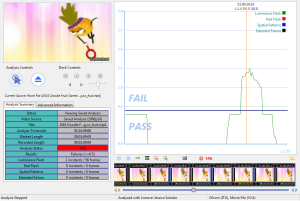
The results of testing the Google trailer with an image analysis tool are shown in this screen grab. Oscillating vertical stripes in the cartoon image in the upper left of the screen create a flashing effect that fail to meet guidelines for reducing the risk of photosensitive seizures.
I tested the trailer using an industry-standard application called the Harding Flash and Pattern Analyzer that detects image sequences that can trigger photosensitive seizures. It is based on algorithms devised by Graham Harding, one of the world’s leading experts on photosensitive epilepsy. The application is widely used by producers and networks in the UK—including by the BBC—to reduce the risk of seizures from material on broadcast TV. The analyzer examines video sequences frame by frame for very specific and measurable image qualities that researchers have found can trigger seizures.
Seizures from video shown on TV about 2012 Olympics logo

A video introducing the 2012 London Olympics logo was withdrawn in the UK after some viewers reported seizures.
This is not the first time that Olympics-themed promotional visuals have placed viewers at risk of seizures. A promotional video for the logo of 2012 London Olympics logo shown on British TV news in 2007 resulted in seizures in some viewers. It had not undergone the required testing that would have alerted producers to the problem prior to broadcast.
Video Game of the Year fails seizure safety guidelines test
Posted: 03/05/2015 Filed under: Results of safety testing, Seizure Warnings | Tags: computer games, photosensitive epilepsy, seizures, video games Leave a comment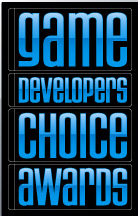 The Game Developers Choice Game of the Year Award was given yesterday to Middle-earth: Shadow of Mordor, a title containing scenes that can provoke epileptic seizures. The game’s visual sequences violate guidelines for reducing the risk of seizures provoked by flashing and/or other provocative visual stimuli.
The Game Developers Choice Game of the Year Award was given yesterday to Middle-earth: Shadow of Mordor, a title containing scenes that can provoke epileptic seizures. The game’s visual sequences violate guidelines for reducing the risk of seizures provoked by flashing and/or other provocative visual stimuli.
Game Developers Choice Awards are voted on by an invitation-only group of leading game creators across the video game industry, and are presented at the annual Game Developers Conference, an event that attracts more than 20,000 attendees. Here are some excerpts from the conference website describing the Game Developers Choice Awards:
- the premier accolades for peer recognition in the digital games industry
- innovation and excellence in the art of making games
- recognize and celebrate the creativity, artistry and technical genius of the finest developers and games created in the last year
You get the idea. Consumer safety and inclusiveness, though, are apparently–no surprise–absent from the selection criteria.
So what?
You may have heard that photosensitive epilepsy, the condition causing vulnerability to visually provoked seizures, is very rare. It’s more common than studies have shown, and many cases go unreported. Seizures can be very subtle events that don’t draw attention, meaning that the individual and anyone with that person may have no idea a seizure has happened. Whether or not a seizure is an obvious event, it can bring on a range of disabling physical and cognitive after-effects as well as mood changes.
Even though video games routinely carry seizure warnings, only some of them contain images that could provoke seizures. Unfortunately, consumers have no way of knowing which games have these images. So I have been testing popular games with an application designed to identify image sequences with a high likelihood of provoking seizures in people with photosensitive epilepsy.

Hearthstone: Heroes of Warcraft, the only Game of the Year Award nominee that passed the seizure safety test, is a digital version of a trading cards-based strategy game.
Contenders for Game of the Year
The winning game was chosen from a field of five nominees, only one of which–Hearthstone: Heroes of Warcraft (Blizzard)–tested as seizure-safe didn’t fail the seizure detection test in the sequences I tested.***Please note that while my testing didn’t find unsafe sequences in Hearthstone, a Reddit poster had seizures triggered by the game. I’ve previously posted on the other three nominated games that tested as unsafe:
Bayonetta 2 (Platinum Games/Nintendo)
Destiny (Bungie/Activision)
Alien: Isolation (Creative Assembly/Sega)
Testing methodology
I run downloaded gameplay clips, cinematic clips, and promotional trailers for each game and submitted the sequences to the Harding Flash and Pattern Analyzer. The FPA is widely used by producers and networks in the UK—including by the BBC—to reduce the hazard of seizures from all material on broadcast TV. It examines video sequences for very specific and measurable image qualities that researchers have found can trigger seizures:
- rapidly alternating light and dark images (flash/flicker)
- certain stripes and geometric patterns with high contrast
- large areas of very bright (“saturated”) red
- problem images take up more than one quarter of the screen
If the first clip I test of a game fails the safety guidelines test, I note that and move on to test the next game. I typically test at least 4 or 5 additional clips of a game if no guidelines violations are found initially. If I have a high level of suspicion due to the game genre and/or overall look of the sequences that there might be unsafe “footage” that I haven’t yet found, I may test a lot more clips.
I work with video clips available online, some of which are official marketing and gameplay trailers; others are cutscenes and gameplay sessions posted by reviewers or fans. I avoid clips showing games that have been modified with other software.
Disclaimers***
Your results could vary. Games that I report to be compliant with seizure reduction guidelines could have seizure-provoking sequences that I was unable to locate. The seizure reduction guidelines are designed to eliminate seizures in 97 percent (not 100) of inividuals with photosensitive epilepsy.
In addition, the seizure threshold of individuals is affected by a number of factors including illness, hunger, stress, fatigue, length of play, and the player’s menstrual cycle, among others. So a game that seems OK for a given individual may trigger a seizure in that same person under different conditions.
The royals in New York, as viewed from the UK
Posted: 12/09/2014 Filed under: Photosensitive Seizure Prevention, Seizure Warnings, TV | Tags: flash, flicker, photosensitive epilepsy, photosensitivity, seizures 2 CommentsWhen the Duke and Duchess of Cambridge arrived at their New York hotel this week, it was big news. Did you catch the squeals of delight from the crowd and the flicker of so many cameras flashing? The arrival scene was featured on a number of American news programs.
How it was seen in the UK
This same New York arrival scene was shown in the UK as well—but with an important difference.
Rapid-fire flash photography from the swarm of media creates a strobe-like effect on the image, which is known to trigger seizures in some people. In the US this material is broadcast despite the seizure risk.
But for more than 20 years, TV programs and commercials flashing at frequencies that can provoke seizures have been barred from broadcast in the UK. An exception to the regulation is made for breaking news coverage, where potentially seizure-inducing material is allowed to air if accompanied by a warning. These regulations were put in place after a noodle commercial triggered seizures in several British viewers.
Out of curiosity I tested a video clip of that New York sidewalk scene to see if the flash freqency falls into the category of a seizure hazard. I used an application called the Harding Flash and Pattern Analyzer (below) that assesses video sequences for seizure safety. The clip did in fact exceed flash safety limits for people vulnerable to visually induced seizures. Folks in the UK at least got an on-screen warning, which perhaps gives susceptible viewers a chance to avert their eyes.

News video of the royals arriving in New York did indeed fail the seizure safety test, as indicated by the green line above the pass/fail boundary on the graph. Screen is taken from the Harding Flash and Pattern Analyzer.
What happens when American TV programs are shown in the UK?
TV programs and music videos imported to Great Britain from the US (and other countries) need to be tested first, then modified to comply with the British seizure safety mandate. An engineer in a London post-production studio who does this compliance work shared with me that a popular US crime series had nearly 150 violations of seizure safety guidelines in a single episode. Where is the consumer lobby for seizure-safe TV programming in this country? Anybody?
Signs it could have been a video game seizure
Posted: 06/11/2013 Filed under: Diagnostic Challenges, Health Consequences, Seizure Warnings | Tags: computer games, flash, flicker, photosensitive epilepsy, photosensitivity, seizure symptoms 7 Comments
My daughter Alice drew this image of what she typically saw while regaining full consciousness after a video game seizure
How can you tell you’ve had a seizure? That your child may have?
It can be easy to recognize a seizure in someone else–if the seizure involves classic convulsions. However, if you have convulsions and nobody is with you to witness the episode, when you regain awareness you probably won’t remember any part of the seizure. You might figure out that something like a seizure happened if you’d been sitting down before and don’t know how you ended up on the floor, or if you experience unexpected bruises or muscle soreness. But since the nature of most seizures is that you aren’t fully aware of your surroundings, you probably won’t know all that happened.
Non-convulsive seizures are tougher to detect in yourself or someone else, since some symptoms can be subtle and many could be attributed to other factors. Before, during and after a seizure people may experience strange sensations that are difficult to describe. Children in particular may have trouble realizing that what they’ve experienced is out of the ordinary and should be reported to a parent.
So a lot of seizures are never identified because they aren’t obvious. The most difficult seizures to identify are complex partial seizures, which elude detection but slow down your thinking, mess with your mood, and scramble your body rhythms for days afterward. And of course, some of the symptoms that follow the event itself, such as irritability, could be attributed to any number of factors.
While it would be good to know for sure if what you or your child experienced was a seizure, very often you can’t know. I’ve put together a 13 Signs You Might Have Had a Seizure While Playing a Video Game list. Consider the possibility that a seizure occurred if you notice rapid onset of any of these symptoms:
Regarding item #13, consider that sometimes you hear about people with such serious addictions to gaming that they play non-stop for many hours without a break. The common assumption is that if they wet or soiled themselves while playing, they were just too involved in the game to want to stop for a bathroom break. I think it’s much more likely that these incidents occur during the involuntary muscle movement and altered consciousness of a seizure and that the player isn’t aware of either the seizure or the mishap.
Why seizure warnings aren’t very helpful
Given the range of possible symptoms, it’s impossible for game publishers to write a meaningful seizure warning that alerts consumers to all possible symptoms. As an example, Microsoft’s photosensitive epilepsy warning—if you can find it in small print at the bottom of the Xbox Games Stores screen–says that seizures “may have a variety of symptoms, including lightheadedness, altered vision, eye or face twitching, jerking or shaking of arms or legs, disorientation, confusion, or momentary loss of awareness.”
If you even read the warning, that’s a lot to absorb and to keep in mind while playing. Most people aren’t looking for reasons not to go ahead and play. Nobody really wants to think photosensitive seizures could happen to them or their kids, so it isn’t until something doesn’t seem quite right that you might start trying to figure out an explanation.
What you should watch for are unusual feelings, sensations, or behavior that could indicate a seizure’s start, middle, or aftermath. Until you’ve knowingly experienced a seizure, you probably wouldn’t realize those can indicate a seizure. One clue might be if you notice the same set of symptoms happening on multiple occasions during a particular game, or in other conditions of flashing light (fireworks or flickering fluorescent bulbs, for example).
Open letter to the BioShock creative team
Posted: 04/18/2013 Filed under: Photosensitive Seizure Prevention, Results of safety testing, Seizure Warnings, Video Game Companies | Tags: BioShock, computer games, flash, flicker, photosensitive epilepsy, seizure warning, seizures, video games Leave a comment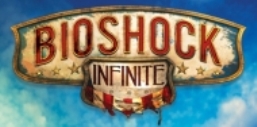 Congratulations on last month’s successful launch of BioShock Infinite. The reviews are extraordinary. BioShock Infinite is said to set a new standard for what the video game experience can be. Players are moved and enthusiastic about many aspects of the game and speak effusively about their unprecedented degree of involvement with the story and characters. With all the creative energy, care, and respect for players that went into developing BioShock, though, the game–like so many others–exposes players to visuals that can cause seizures.
Congratulations on last month’s successful launch of BioShock Infinite. The reviews are extraordinary. BioShock Infinite is said to set a new standard for what the video game experience can be. Players are moved and enthusiastic about many aspects of the game and speak effusively about their unprecedented degree of involvement with the story and characters. With all the creative energy, care, and respect for players that went into developing BioShock, though, the game–like so many others–exposes players to visuals that can cause seizures.
I examined several BioShock launch trailers and some other “footage” – a total of eight clips of a few minutes each – and assessed them using an application that identifies video sequences that can trigger seizures. Most of the material was fine, but three of the clips contained brief flashing sequences that don’t meet criteria for safe viewing. It doesn’t take more than a brief exposure to trigger seizures in those who are vulnerable.
Contrary to what many gamers assume, eliminating seizure triggers doesn’t make a game boring to look at or play. Irrational Software created a visually stunning, highly engaging experience in which most of the scenes don’t pose a seizure risk. Reports of video game-induced seizures began surfacing in 1981 in newspapers and medical journals. A great deal is known about what types of images and sequences can provoke seizures.
Guidelines for seizure-free video sequences were developed in the UK more than 20 years ago. Since 1991 all television programming and commercials there are required to pass a seizure-safety test. Japan put in place a similar measure following the 1997 Pokémon broadcast that led to hundreds of seizures. In 2005 the International Telecommunication Union published recommended universal guidelines for reducing photosensitive seizures from televised material.
While all these efforts were made to reduce the risk to consumers of photosensitive seizures, video game publishers took their own action—providing printed seizure warnings. The warnings began appearing in the early ‘90s, after a few consumers filed personal injury lawsuits. Putting a seizure warning on video games has thus far provided legal cover for your industry, but offers little protection for customers.
The warnings all state that photosensitive seizures happen to “a very small percentage of people.” Seizures from flashing images are not rare, but people believe they are because that’s what the warnings say! The wording of these warnings is based on researchers’ estimates that were made decades ago, before today’s sophisticated graphics and before more recent studies that suggest that many photosensitive seizures could be going completely unnoticed. Many doctors continue to think these seizures are rare because that’s what they were taught.
If you haven’t heard many reports of seizures happening while playing BioShock, don’t assume the seizures aren’t occurring. They’re just not being identified. A person experiencing seizures is likely to lose awareness and not even realize what’s happening, or notice that a bit of time has passed that they can’t account for. Furthermore, most seizures don’t involve convulsions, and the only sign others might see could be as subtle as a short period of staring.
Whether or not a seizure is noticeable, it’s a serious event with real risks to health. It can impair health, thinking, and behavior for days afterward. Sometimes a seizure results in permanent disability.
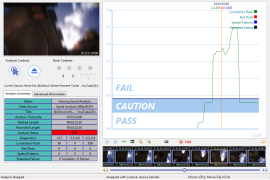
But this screen capture from the Harding Flash and Pattern Analyzer shows that flash in the BioShock sequence shown at upper left failed seizure safety guidelines.
It’s not reasonable to expect parents to continually monitor their kids for possible signs of a seizure, particularly given that video games are played while people face a screen. So let’s turn to older teens and adults in the midst of a game, who might theoretically be more self-aware and responsible for their own well-being. Will they be vigilant for seizure symptoms such as odd sensations or altered consciousness?
Just last month in a New York Times interview your creative director Ken Levine said, “We work really hard to wear down the audience’s ability to even process. If players are immersed enough, they stop treating it as a piece of artifice and just start experiencing it.” Do you see the problem here? In this ideal game experience, how can players be expected to “immediately stop playing and consult a doctor” as the warning advises, if they develop symptoms consistent with a seizure?
With BioShock Infinite now brought to market, people are asking what your company will do next. You could easily raise the bar further for the industry by publicly committing to developing seizure-safe games. I live in the Boston area and would welcome the chance to begin a conversation about this at your headquarters in Quincy.
Lawsuits filed after games caused seizures
Posted: 04/06/2013 Filed under: Legal Action, Seizure Warnings, Video Game Companies | Tags: American Academy of Pediatrics, computer games, Nintendo, photosensitive epilepsy, photosensitivity, product liability, seizure warning, Sony, Ubisoft, video games 3 Comments No consumer has won a product liability/personal injury case against a game manufacturer whose video game triggered seizures. Cases were either dismissed, settled, or won by the game company.
No consumer has won a product liability/personal injury case against a game manufacturer whose video game triggered seizures. Cases were either dismissed, settled, or won by the game company.
Despite their limited usefulness to consumers, seizure warning notices do seem to provide legal protection to game publishers. And juries have a hard time awarding damages to plaintiffs with a pre-existing condition, even if plaintiffs didn’t know of their photosensitive epilepsy prior to the seizure(s) triggered by a video game.
In one case Nintendo actually conceded that its game had in fact triggered seizures, but that didn’t get in the way of the company winning the case. A judge later overturned the jury’s verdict because Nintendo had withheld critical information in contempt of court.
The cases date back to 1991, but the apparent total number of cases–ten–is pretty small. One has to wonder what percentage of the seizures triggered by exposure to video games are ever identified as visually induced seizures.
One of the few consumers to reach a settlement is John Ledford of Alabama, whose settlement agreement bars John from discussing his own case. John has found another way to raise awareness of video game seizures. He has researched other cases and reached out to epilepsy organizations around the globe to raise their awareness of the continuing seizure hazard from video game images. John’s Facebook page contains most of the history I’ve assembled here:
| Year Filed | State | Plaintiff(s) | Game(s)/Platform/Defendant | Outcome |
| 1991 | MI | 15-year old Laura Moceri had grand mal seizure while playing. | Kid Icarus (Nintendo) | Lost |
| 1993 | IL | Chicago boy suffered occasional seizures during many hours of game play. | Nintendo | Dismissed |
| 1995 | AL | John Ledford had his first ever grand mal seizure while playing game at an arcade. The seizure damaged his optic nerve and caused blindness in one eye. | King of the Monsters II (SNK Corp.) | Settled |
| 1998 | LA | 13 year-old Joey Roccaforte had clusters of violent seizures | Mega Man X (Super Nintendo) | Jury ruled for Nintendo; judge later vacated the decision because Nintendo withheld critical information before and during trial. |
| 2001 | LA | Esther Walker, mother of 30-year old Benjamin Walker, who died from hitting his head on a table and sustaining internal injuries during a game-induced seizure. | Nintendo 64 | Lost |
| 2001 | LA | 11 year-old Michael Martin, son of Eric Martin, mayor of St. Martinsville, LA. Seizures that began happening during games began occurring also during sleep. | Super Mario Kart (Nintendo 64) | Settled personal injury claim; lost case advocating better warnings. |
| 2001 | LA | 6 year –old Kynan Hebert, son of Lynette Benoit | Nintendo | Dismissed |
| 2002 | FL | 16 year-old Dominic Zummo | Star Wars Episode I: Jedi Power Battles (LucasArts Entertainment, SONY) | Unknown |
| 2007 | NY | While watching his brother play a game, 4 year-old boy had a seizure causing permanent injury. | Spyro: Enter the Dragonfly (Vivendi, SONY Playstation 2) | Last available information: attorney for plaintiff was seeking other plaintiffs for class action suit |
| 2011 | CA | Navy F-18 pilot John Ryan McLaughlin injured in a grand mal seizure that causes permanent loss of flight status | Oblivion: The Elder Scrolls IV (Bethesda Software), Sony Playstation 3. | Still pending; no other information available. |
What constitutes product liability?
In 1997 the criteria for product manufacturer’s liability for a product that has caused harm were revised by the American Law Institute, an independent body of legal experts that drafts and publishes restatements of common law in order to clarify and simplify it. Its work is used as a resource by state lawmakers, judges, and lawyers. Every state has its own laws concerning burden of proof, the awarding of damages, and the like.
The 1997 restatement of product liability law states, “a product is defective when, at the time of sale or distribution, it contains a manufacturing defect, is defective in design or is defective because of inadequate instructions or warnings.” These conditions are then defined separately:
- A product “contains a manufacturing defect when the product departs from its intended design even though all possible care was exercised in the preparation and marketing of the product.”
- A product “contains a design defect when the foreseeable risks of harm posed by the product could have been reduced or avoided by the adoption of a reasonable alternative design by the seller or other distributor, or a predecessor in the commercial chain of distribution, and the omission of the reasonable alternative design renders the product not reasonably safe.”
- A product “is defective because of inadequate instructions or warnings when the foreseeable risks of harm posed by the product could have been reduced or avoided by the provision of reasonable instructions or warnings by the seller or other distributor, or a predecessor in the commercial chain of distribution and the omission of the instructions or warnings renders the product not reasonably safe.”
Some game companies are apparently working to make games that do not provoke seizures, but only Ubisoft has made a public commitment. As far as I can tell, most are merely reworking their warnings.
Nintendo knew about, downplayed seizure risks: BBC report
Posted: 02/20/2013 Filed under: Legal Action, Seizure Risk, Seizure Warnings, Video Game Companies | Tags: computer games, flash, flicker, Nintendo, photosensitive epilepsy, seizures, video games 5 Comments
Nintendo’s Mega Man X was one of the four games tested by the BBC for this investigative report that did not meet British TV seizure safety guidelines.
A BBC report on Nintendo revealed that the company knew more than 20 years ago which of its games were most likely to cause seizures–and downplayed the seizure risk to customers. A former Nintendo customer relations employee interviewed for the story said that many customers called to complain about experiencing seizures. Because he wanted to advise customers concerned about the seizure risk, he asked the company’s R & D group for a list of the games most likely to cause seizures.
Developers came up with a list of more than 30 games. Before the list was released to customers, he said, the company’s lawyers pared down the list to 12 – 15 titles. As customer complaints about seizures grew, Nintendo stopped releasing any seizure information about specific games. The Nintendo executive interviewed asserted that the company began making its games safer and started including seizure warnings with game instructions as soon as the problem came to their attention—in 1991.
The story, featured on the BBC’s Outrageous Fortune program in 2004, also includes an interview with photosensitive epilepsy expert Prof. Graham Harding. Using his own flash and pattern analyzer Prof. Harding shows the results of testing some Nintendo games for seizure safety.
To view the ten-minute segment about video game seizures in the report on Nintendo, first go to www.youtube.com/watch?v=0aFhW56c2Vg and fast forward to about 5:15 into the clip. The seizure segment continues at the beginning of this clip.
The documentary was never aired in the US, and I’d long since given up searching for it online. But I recently came upon it thanks to John Ledford, who has been tracking seizure lawsuits filed against the game industry. John became blind in one eye as a result of his first grand mal seizure—which occurred while he was playing a video game in 1994.
Kanye West loves strobe lights
Posted: 05/07/2012 Filed under: Health Consequences, Music Videos, Photosensitive Seizure Prevention, Political Action & Advocacy, Results of safety testing, Seizure Warnings | Tags: epilepsy, epilepsy advocacy, flash, flicker, Kanye West, music videos, photosensitive epilepsy, photosensitivity, seizure warning, seizures Leave a comment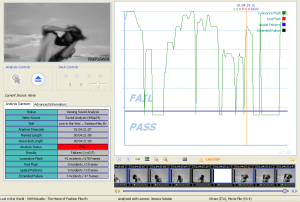
The Harding Flash and Pattern Analyzer shows flash levels in “Lost in the World” fail seizure safety guidelines by a wide margin. At upper left is a screen grab from the new video.
“Kanye West loves strobe lights,” cooed the Huffington Post the other day, reporting the release of the performer’s most recent flash-filled music video. “…the Chicago rapper…seemingly earns an epilepsy warning with every new project. His new video for the not-so-new song ‘Lost in the World’ certainly doesn’t deviate from the pattern.”
Apparently he loves strobe lights so much that–despite being informed, two music video releases ago–that his flashing visuals provoke seizures in some viewers, he is determined to use these effects anyway. Wow, you have to really respect a man who refuses to let the health of the viewing public get in the way of his artistic freedom. The Huff Post article continues in the same admiring tone: “…the rapper is known for his emphasis on quality videos (his half-hour ‘Runaway’ short film was perhaps the biggest statement of the rapper’s visual aesthetic).”
The rapper’s acknowledgement of a potential seizure problem has followed a strange path. In February 2011, accounts of seizures triggered by West’s “All of the Lights” video spurred UK-based Epilepsy Action to request that the video be removed from YouTube. In response, the video was temporarily removed and a warning was placed at the beginning:
This video has been identified by Epilepsy Action to potentially trigger seizures for people with photosensitive epilepsy. Viewer discretion is advised.
A year later the “N—-s in Paris” video was released with this same warning, although Epilepsy Action was never contacted about it.
And now there’s a warning at the beginning of the “Lost in the World” video that doesn’t even explain why the warning is important for viewers. All it says is:
Warning: Strobe effects are used in this video.
I expect Epilepsy Action will probably make a statement regarding the risks of viewing this latest release, and perhaps take issue with the less-than-explicit warning that was provided. How about some advocacy in the US? It’s time to confront the very preventable public health problem created by strobe effects in entertainment media.





